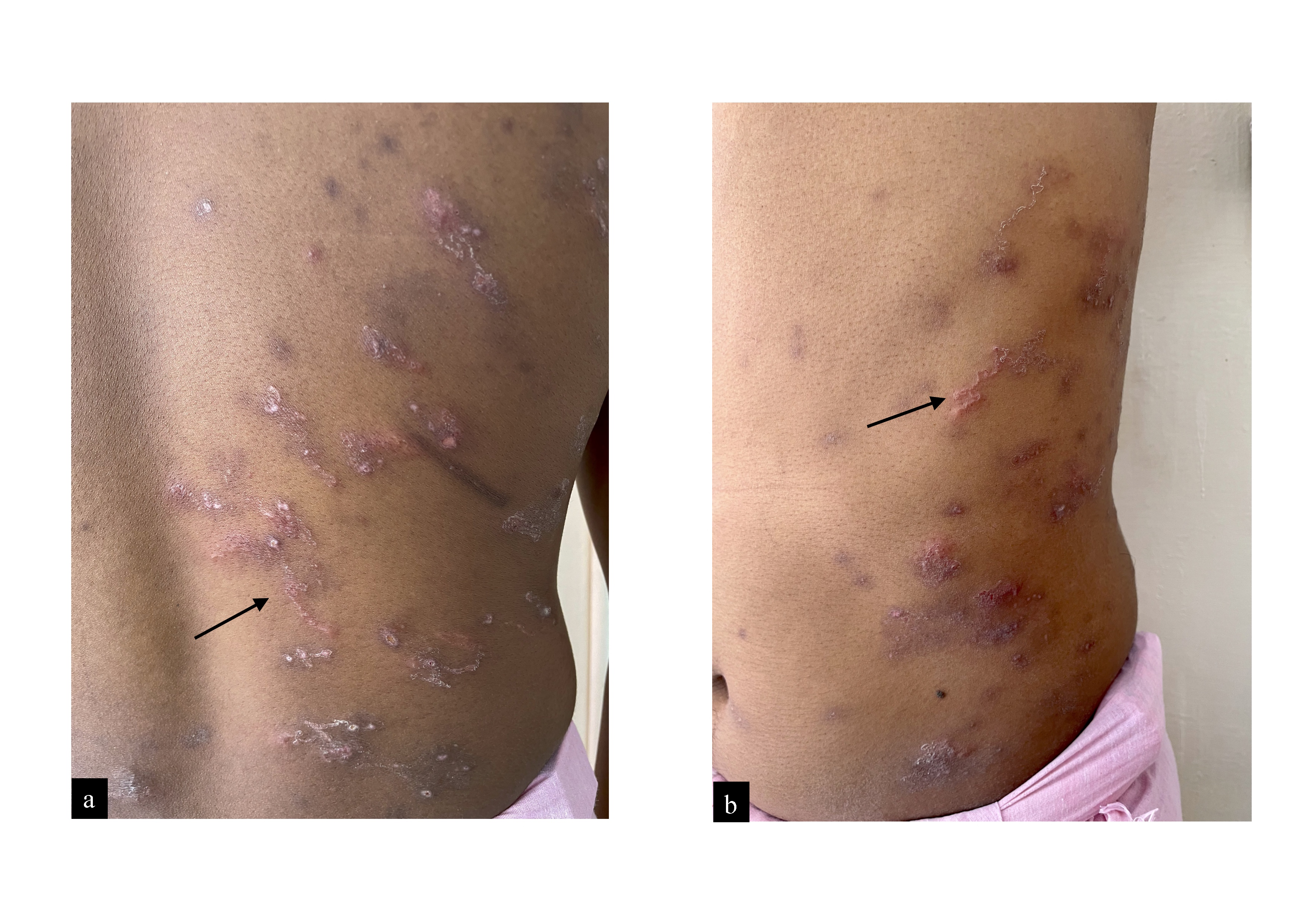Translate this page into:
Creeping eruptions on the back

*Corresponding author: Dr. Manobalan Karunanandhan, Department of Dermatology & STD, Jawaharlal Institute of Post Graduate Medical Education and Research, Karaikal, Puducherry, India. manobalankaruna@gmail.com
-
Received: ,
Accepted: ,
How to cite this article: Karunanandhan M, Sundar AS. Creeping eruptions on the back. CosmoDerma 2022;2:33.
A 42-year-old male presented with itchy papular lesions all over the back which progressed over five days [Figure 1]. The patient gave a history of sleeping on the beach sand. With the history and clinical findings, a diagnosis of cutaneous larva migrans (CLM) was made. CLM is a pruritic migrating skin eruption commonly caused by animal hookworms, namely Ancylostoma braziliense, Ancylostoma caninum, and Uncinaria stenocephala. CLM usually presents as an itchy papular rash that is characteristically migratory. It moves slowly by a few millimeters to 2 cm per day, differentiating it from other migratory skin lesions. Localized lesions are treated with thiobendazole 15% cream. Multiple or generalized lesions may be treated with a single dose of ivermectin (200 mcg/kg) or albendazole 400 mg daily for 3-5 days. Complete resolution is seen in a few days. Secondary bacterial infections, eczematous changes, Loeffler’s syndrome are some of the complications that may be noticed in untreated individuals.[1]

- (a) Multiple erythematous papules and serpiginous plaques (black arrows) over the lower back (b) and lateral side of the trunk.
Declaration of patient consent
Patient’s consent not required as patient’s identity is not disclosed or compromised.
Financial support and sponsorship
Nil.
Conflicts of interest
There are no conflicts of interest.
References
- Cutaneous Larva Migrans. In: StatPearls [Internet] (2021 Jul 18). Treasure Island (FL): StatPearls Publishing; 2022.
- [Google Scholar]





